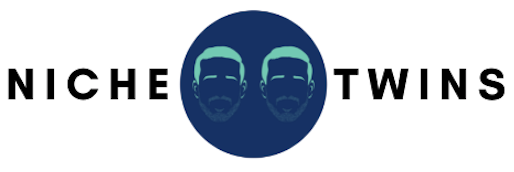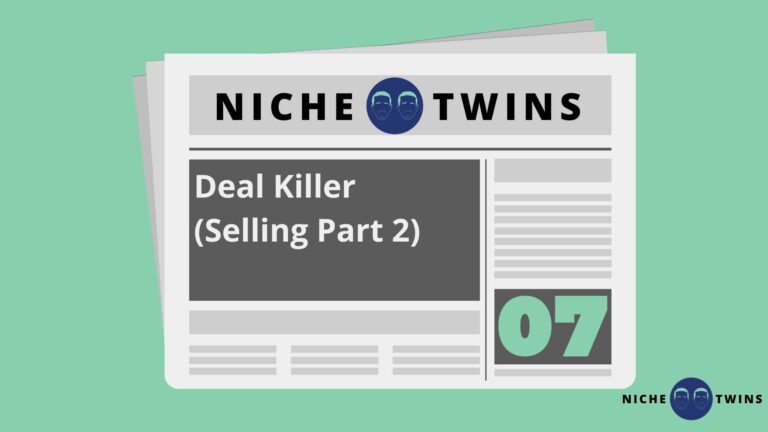Time kills all deals.
Take selling your business, for example.
So much can go wrong.
Your business could take a turn for the worse.
Deal killed.
Your buyer could get cold feet and begin second guessing everything.
Deal killed.
You main supplier could go out of business.
Deal killed.
Your display ad provider could have a rouge 29-year-old employee add his personal Chase account as the payee for a $9,149,001 payment from Google, rendering the ad provider insolvent just as you’re about to sell your website.
Deal killed.
Sh*t happens
That last one is a true story.
Well not the insolvent part. Ezoic survived.
But they truly were at “risk of becoming entirely insolvent” from the incident.
And it happened just a few months ago, while I was in the middle of selling my website.
You know, the website that had Ezoic display ads all over it?
Ya, that one.
Fortunately this event went under the radar, the funds were recovered and my sale went through.
But the point is, sh*t happens.
Sometimes entirely unforeseen sh*t.
And given enough time, that sh*t will kill your deal.
Buyer financing
Which is why thinking through the type(s) of buyer financing you allow when selling is so important.
At the very least you should understand timeline implications.
Cash
Cash is king. Pretty straight forward. Cash buyers can move quickly. My cash buyer was able to close the deal in just 23 days (full timeline breakdown below).
Bank loan
Also fairly straight forward. Buyer goes to a bank and applies for a small business loan. Banks are usually pretty strict with their lending criteria for SMB loans. They require a ton of documentation, and the process can take a long time. But interest rates are generally favorable.
SBA loan
I could write 10,000 words about the Small Business Administration and the SBA loan process, but here’s the gist: The SBA is run by the federal government. Its purpose is to help fund small businesses in America (up to $5MM in funding). SBA loans have an “SBA guaranty” meaning the SBA will reimburse the lender (the bank) for a percentage of the debt (up to 90%!) if the buyer ends up defaulting on the loan. This reduces lender risk and can increase a small business owner’s chance of getting approved for funding. Again, banks are usually strict to approve these. Lots of documentation is required, and the process can take a LONG time – 108 days in my case (full timeline breakdown below).
If you want to geek out a little bit, here is a real world breakdown of an SBA loan from a buyer that intended to purchase my blog.
About this loan:
- $1,160,000 loan, $205,000 down payment
- The rate of interest for the Loan will float at a rate of 2.75% per annum above the Prime Rate. Prime Rate is defined as the highest Prime Rate published in the ‘Money Rates’ section of the Eastern edition of the Wall Street Journal.
- 120 month term
- The initial monthly payment was estimated at $15,491
- Regardless of whether this Loan is actually executed, you will be responsible for the payment of all costs and expenses incurred in connection with the processing and closing of this Loan. These expenses will include, without limitation, third party fees and our counsel’s fees and are estimated below:
Seller financing
This is where the seller serves as the lender and offers the buyer a loan. There is no bank involved.
Here’s a hypothetical example:
A business is being sold for $1 million. The seller agrees to extend the buyer seller financing for 50% of the purchase price (the other 50% is financed some other way). The seller financing terms include a 20% down payment, 7% interest and a repayment term of 10 years, paid monthly.
- Seller Financing: $500,000
- Down Payment: $100,000
- Term: 10 Years (120 monthly payments)
- Monthly Payment: $4,644.34
- Total Interest Paid: $157,320.70
Seller financing improves the likely-hood of a sale and usually helps fetch a higher overall sale price – it shows buyers you believe in your business because you still have skin in the game post sale.
Revenue-based financing
I just recently learned about this option because a potential buyer of my site indicated he was going to try and get his financing through “Boopos“. I had never heard of them before. Turns out they’re a new, revenue-based financing platform. They finance small and medium-sized business acquisitions in return for a percentage of future revenues, with flexible repayments from one to five years. They can pre-approve you in 48 hours and fund your loan in as little as 7 days! A really interesting option worth exploring in the fast moving world of online business sales.
Bonus – Timelines!
In the process of selling my content site, I had an SBA buyer, and then a cash buyer.
I went back through all my emails during the sales process and pulled together detailed timelines for each.
I would have loved to have examples like these to reference when I was selling!
SBA Buyer – 108 days
- Oct 18: Potential buyer contacts me on Twitter, I connect them with my broker at QuietLight
- Oct 31: LOI bullet points agreed to
- Nov 5: Buyer starts working with SBA lender #1
- Nov 17: Full LOI signed and executed Jan 31st – Exclusivity period ends
- Nov 18: Due Diligence kick-off call
- Dec 26: Buyer lets us know SBA lender came back with less than ideal terms (bank wants more equity and an additional corporate guarantee from one of their other business entities). Lender tells buyer he knows of another SBA lender that won’t require those terms. Lender #1 is willing to share all progress/SBA docs with new Lender #2 to help expedite the process. We agree to new dates and execute a new LOI. Lender #2 commitment letter is now expected by 1/18 and once received, we will extend exclusivity period to 2/17 (closing).
- Jan 18 – Lender #2 commitment letter delayed, but we are told they should have it within a week.
- Jan 25: Lender #2 SBA commitment letter received from bank (you saw the exact terms above!)
- Jan 26: We start working on the APA. My attorney provides minor feedback to theirs.
- Jan 27: I hear from buyer they are “pushing for a 2/17 closing, but lender hesitant to commit to that date, so 3/10 is likely more realistic”. I was suspicious of this – it felt like buyer was dragging their feet now.
- Jan 30: I personally call their lender (buyer gave me lender’s contact info a few weeks earlier to alleviate concerns I had about loan approval). Lender assures me on call that they can easily close by Feb 15th.
- Jan 31: I push back on buyer to close Feb 15th, not 3/10. Lender is able to, why aren’t they? It’s been 107 days at this point.
- Feb 1: Buyer backs out of the deal. The traffic and revenue drop of site during sale process meant that they wouldn’t be able to fully service their first SBA payment of $15,491 (site only made $13,000 in January, down from $30,000 in December).
Cash Buyer – 23 days
- Feb 8: My website is listed for sale on QuietLight
- Feb 9-Feb 16: I do interviews with 5 potential buyers
- Feb 17: LOI bullet points agreed to by potential buyer
- Feb 18: Full LOI signed and executed
- Feb 18-Feb 25: Exclusivity Period begins and buyer begins due diligence
- Feb 26: Asset Purchase Agreement executed (minor feedback from both attorneys)
- Feb 27: Escrow agreement executed
- Feb 28: Funds wired to escrow and transfer of assets complete
- Mar 1: Test wire for $100 sent
- Mar 2: Remaining balance of wire sent – Done deal.
Long one this week.
Hope it was helpful.
Next week is Selling Part 3 – the finale: Uncle Scam (taxes), hand off/ transfer of assets, and the escrow process.
In the meantime, in between time, go have yourself a weekend.
I’m off to close on our new house!
We’ll talk soon.
-Mike

Niche Twins newsletter sent weekly on Fridays at 8:30 AM ET


